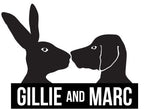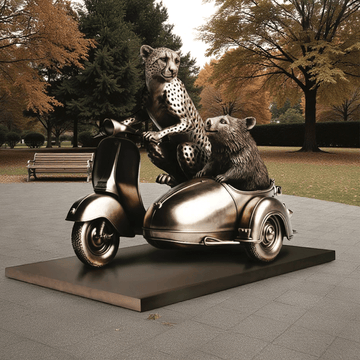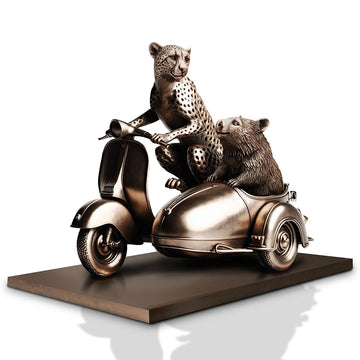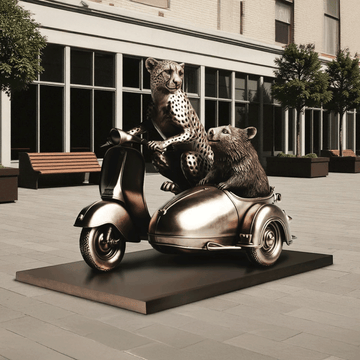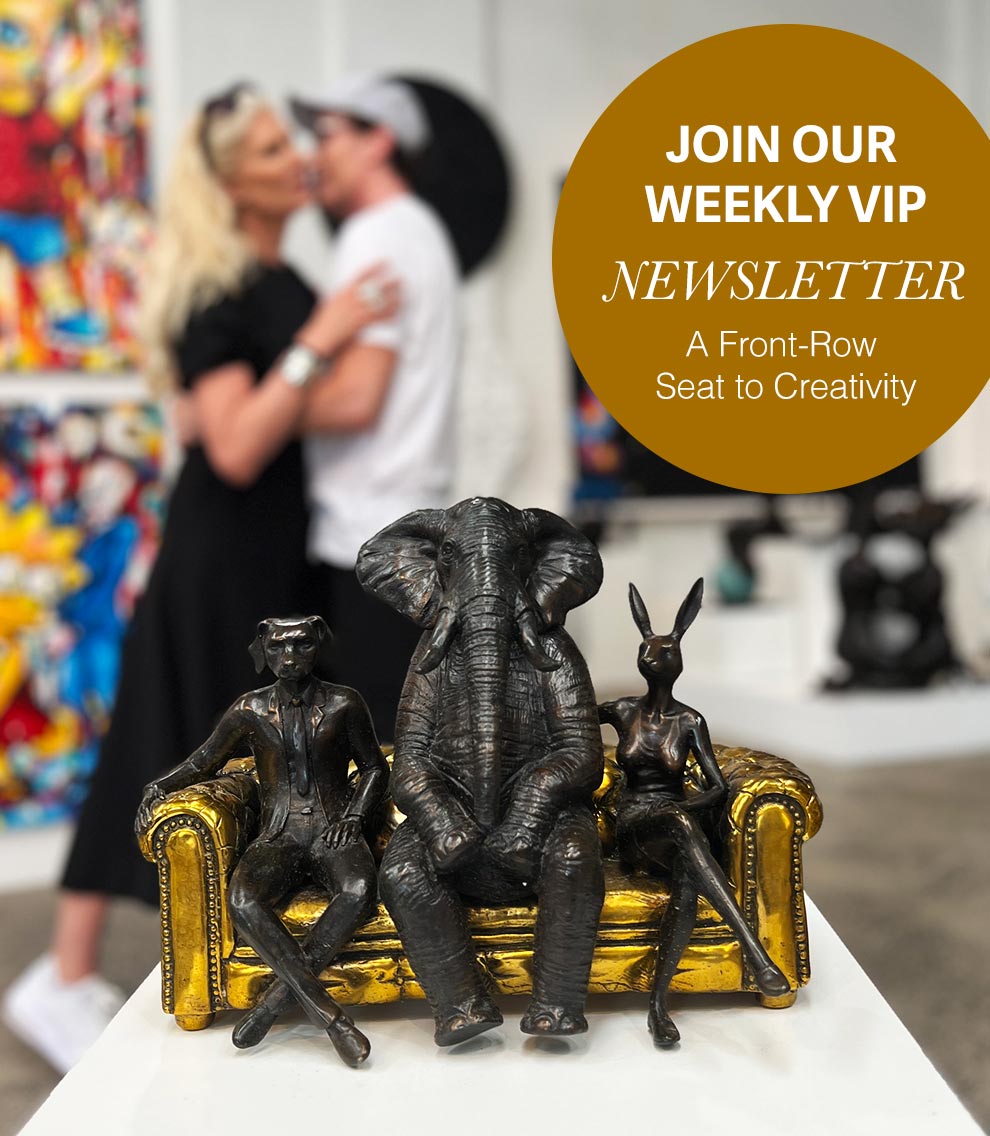CLICK HERE TO DONATE TO LOVE THE LAST WILDLIFE FUND
Dimensions
TBC
Medium
Bronze with Bronze Patina
Edition Number
/15
Sponsored By
Sponsor Name
Description
This is an enchanting bronze sculpture that captures a thrilling moment of interspecies camaraderie and adventure. The piece features a sleek, muscular Amur Leopard, poised with effortless grace and a look of focused exhilaration, leaning into the wind as it drives a vintage Vespa. Nestled snugly in the sidecar, the endearing hairy-nosed wombat peers out with wide-eyed excitement. Both the Amur Leopard and the Northern Hairy-Nosed Wombat are among the world’s most endangered animals, and their presence in this work underscores the urgent need for conservation efforts. Behind the leopard, an open, inviting spare seat extends from the Vespa — a symbolic invitation for the public to join this joyful yet critical journey, riding alongside these rare creatures in the fight to protect them. This whimsical sculpture not only delights with its narrative of speed, friendship, and shared purpose, but also serves as a powerful call to action, urging viewers to embrace the unexpected adventures life may offer — and to stand together in safeguarding the fragile wonders of our natural world.
Sculpture Title
The Amur Leopard and Hairy Nosed Wombat Race in the Vespa Side Car
Animal Names
Name goes here
Conservation Status
Critically Endangered
About the Amur Leopard and Northern Hairy Nosed Wombat

The Amur leopard (Panthera pardus orientalis) is one of the world’s most endangered big cats, with fewer than 100 individuals remaining in the wild. It lives in the temperate forests of Russia’s Far East and northeastern China, where cold winters and rugged terrain shape its survival. Recognizable by its thick, pale coat and distinct rosettes, the Amur leopard is a skilled hunter that preys on deer and hares. Its population has declined due to poaching, deforestation, and loss of prey.
Conservation efforts, including anti-poaching patrols, habitat protection, and captive breeding, have helped the population grow slightly in recent years. Still, the species remains critically endangered, relying on continued human protection to survive.

The hairy-nosed wombat, specifically the northern hairy-nosed wombat (Lasiorhinus krefftii), is one of the most critically endangered mammals in the world. Once widespread across eastern Australia, it now survives only in a few small, protected areas in Queensland. The total population is estimated at around 300 individuals, confined mainly to Epping Forest National Park and a second reintroduced site at Richard Underwood Nature Refuge.
The species’ decline has been driven by habitat loss, competition with livestock for food, and predation by dingoes. Conservation efforts, including fenced reserves, habitat restoration, and supplementary feeding, have helped stabilize and slightly increase the population in recent years. Despite this progress, the northern hairy-nosed wombat remains critically endangered, and its survival depends on continued protection and the establishment of additional safe habitats.
How to Help
Inspired by animals that Gillie and Marc met on their travels, we invite the public to discover and interact with these beautiful creatures up close and personal – this allows audiences to connect, take photographs and share their favourite species with friends and family.
With more exposure comes more awareness and builds on the love we already have for animals around the world. With love comes a greater sense of urgency to create a change and save all endangered animals.
The sculpture will be aligned with the hashtag #GillieandMarc and #LoveTheLast to raise unparalleled awareness about the sculpture’s cause across the globe.

CLICK HERE TO DONATE TO LOVE THE LAST WILDLIFE FUND
Give Back to Love The Last Wildlife Fund
With every edition purchased, Gillie and Marc will donate a percentage of proceeds to support Love The Last Wildlife Fund.
Love The Last Wildlife Fund is a global conservation organization devoted to saving 21 of the most critically endangered animals on Earth. Motivated by a deep love for nature and wildlife, the Fund focuses on protecting species that stand on the very edge of extinction through science-driven conservation, habitat restoration, and community collaboration.
Its initiatives include anti-poaching efforts, rescue and rehabilitation programs, and sustainable development projects that help local communities coexist with wildlife. By combining compassion with action, Love The Last Wildlife Fund works to ensure that these 21 remarkable species are not lost forever, preserving the planet’s natural heritage for future generations.
Artwork Features
Gillie and Marc love working in bronze for many reasons. Bronze is a very hardy material and will last forever. As experts in coloring bronze, Gillie and Marc enjoy experimenting with their sculptures, adding a splash of color to brighten the work, making it even more unique. > Read more
